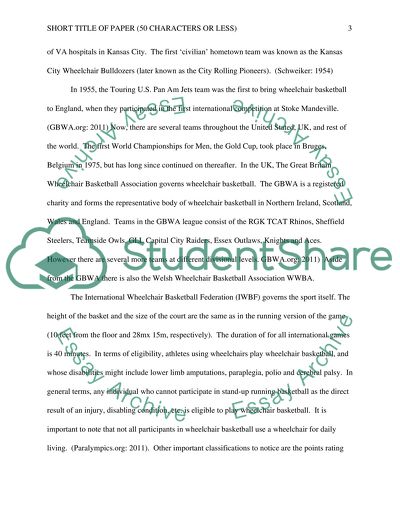Cite this document
(“Wheelchair Basketball Essay Example | Topics and Well Written Essays - 2500 words”, n.d.)
Retrieved from https://studentshare.org/environmental-studies/1421709-a-case-study-of-wheelchair-basketball
Retrieved from https://studentshare.org/environmental-studies/1421709-a-case-study-of-wheelchair-basketball
(Wheelchair Basketball Essay Example | Topics and Well Written Essays - 2500 Words)
https://studentshare.org/environmental-studies/1421709-a-case-study-of-wheelchair-basketball.
https://studentshare.org/environmental-studies/1421709-a-case-study-of-wheelchair-basketball.
“Wheelchair Basketball Essay Example | Topics and Well Written Essays - 2500 Words”, n.d. https://studentshare.org/environmental-studies/1421709-a-case-study-of-wheelchair-basketball.


